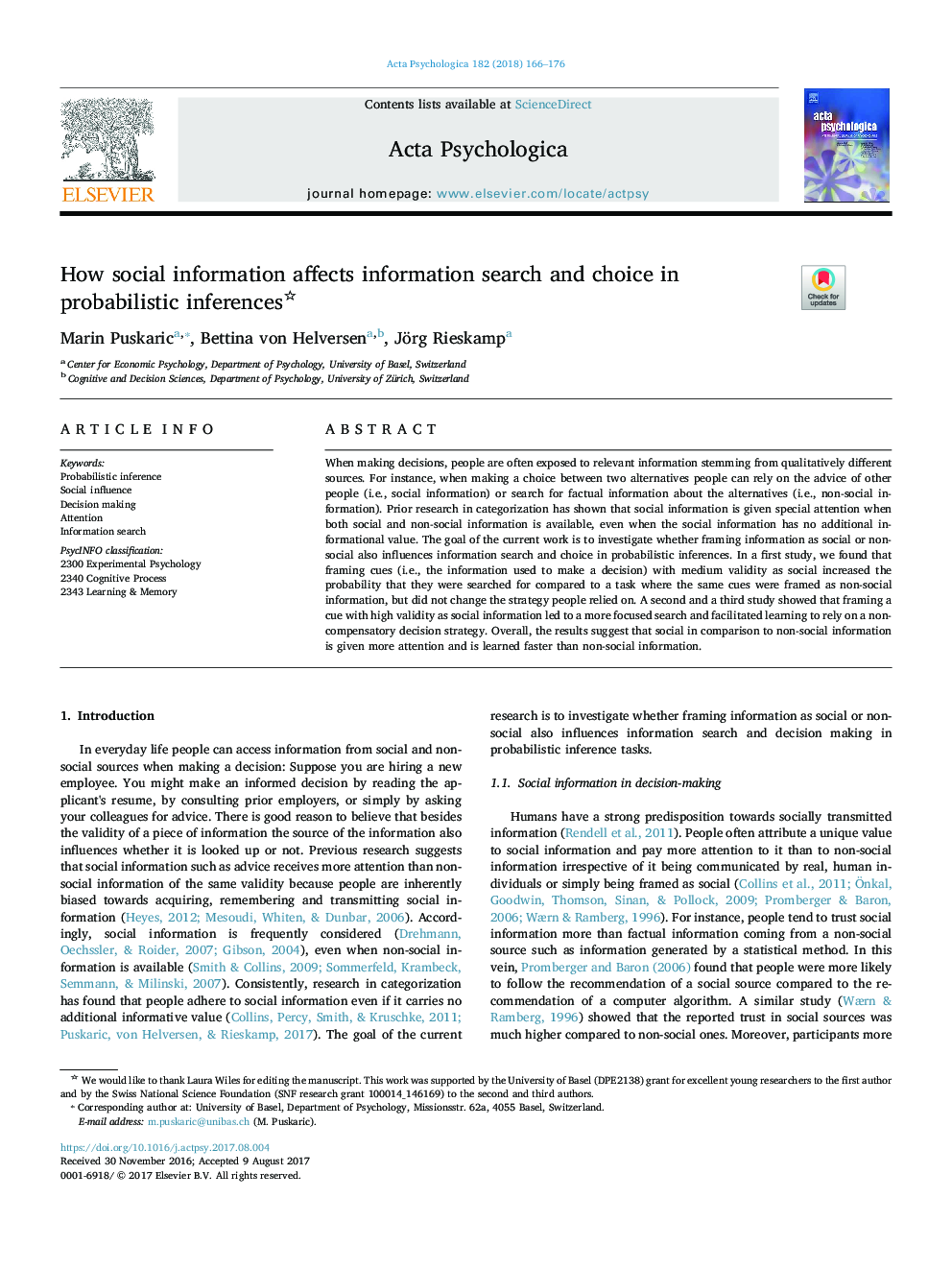| Article ID | Journal | Published Year | Pages | File Type |
|---|---|---|---|---|
| 7276902 | Acta Psychologica | 2018 | 11 Pages |
Abstract
When making decisions, people are often exposed to relevant information stemming from qualitatively different sources. For instance, when making a choice between two alternatives people can rely on the advice of other people (i.e., social information) or search for factual information about the alternatives (i.e., non-social information). Prior research in categorization has shown that social information is given special attention when both social and non-social information is available, even when the social information has no additional informational value. The goal of the current work is to investigate whether framing information as social or non-social also influences information search and choice in probabilistic inferences. In a first study, we found that framing cues (i.e., the information used to make a decision) with medium validity as social increased the probability that they were searched for compared to a task where the same cues were framed as non-social information, but did not change the strategy people relied on. A second and a third study showed that framing a cue with high validity as social information facilitated learning to rely on a non-compensatory decision strategy. Overall, the results suggest that social in comparison to non-social information is given more attention and is learned faster than non-social information.
Keywords
Related Topics
Life Sciences
Neuroscience
Cognitive Neuroscience
Authors
Marin Puskaric, Bettina von Helversen, Jörg Rieskamp,
